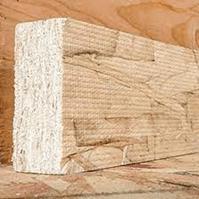Types of Wood Members
As construction techniques continue to grow and evolve, choosing the right material for your job may seem a little overwhelming. This especially rings true with timber construction. Gone are the days when you just needed to specify the size and tree species. Here’s a guide to help you choose the timber that is best suited for your job.
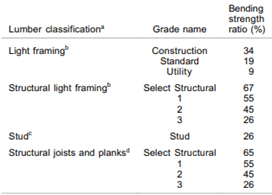 Sawn Wood‐ Traditional sawn wood is still the commonly used type of lumber. Almost all structural sawn wood beams originate from softwood tree species, such as Pine or Douglas Fir. Structural sawn lumber is further classified through stress‐gradings, which establish standard working values for properties that can be used to determine the load‐bearing capacity of these members. Typical lumber grades can be seen on the adjacent table. Traditional sawn lumber can be used for almost all structural member, such as joists, beams, posts, etc.
Sawn Wood‐ Traditional sawn wood is still the commonly used type of lumber. Almost all structural sawn wood beams originate from softwood tree species, such as Pine or Douglas Fir. Structural sawn lumber is further classified through stress‐gradings, which establish standard working values for properties that can be used to determine the load‐bearing capacity of these members. Typical lumber grades can be seen on the adjacent table. Traditional sawn lumber can be used for almost all structural member, such as joists, beams, posts, etc.
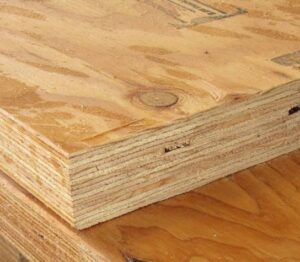
Laminated Veneer Lumber (LVL)‐ Laminated veneer lumber belongs to a family of engineered wood products called structural composite lumber (SCL). Structural composite lumber members are comprised of blocks of lumber materials know as “billets”, which are veneers, strands or flakes of dried and graded woods adhered together. For LVL beams, thin wood veneers are bonded together into a billet, with the grain of all veneers running parallel to the length of the beam. Called “parallel lamination”, this orientation allows LVL beams to exceed the load‐bearing bearing capacity of similarly sized sawn lumber and be used for long‐spanning load‐bearing members, such as beams or rafters.
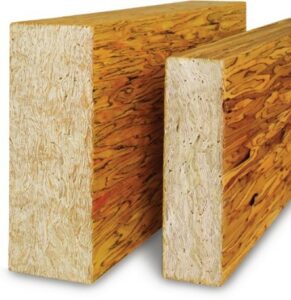
Parallel Strand Lumber (PSL)‐ Parallel strand lumber, another type of structural composite lumber, is manufactured using long, thin strands of wood (typically the waste material from plywood manufacturing), which are laid parallel and bonded together to form a billet. Similar to LVL members, PSL members can be used for long‐spanning beams where greater load‐bearing capacity is required. Additionally, PSL members are also frequently used as columns.
Laminated Strand Lumber (LSL)‐ Similar to PSL, laminated strand lumber is comprised of long, flaked wood strands of hardwoods not normally used for structural applications (e.g. maple). The wood strands used for LSL are typically shorter and thicker then those used in PSL, leading to lower load‐bearing capacity. Typically, LSL members are used for wall framing, such as studs and headers. LSL members can also be used for intermediate spanning beams and rim boards, where the higher strength LVL or PSL members are unnecessary.
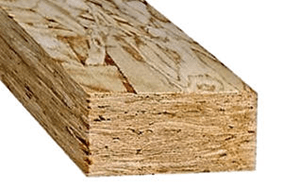
Oriented Strand Lumber (OSL)‐ Oriented strand lumber is comprised of flaked wood strands strands very similar to those used in LSL member, but the length of the strand has been reduced and the thickness increased. As such, OSL members can typically be used in similar situations where LSL members are utilized
